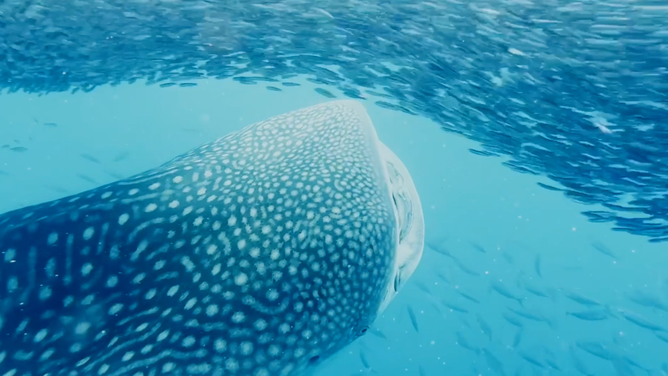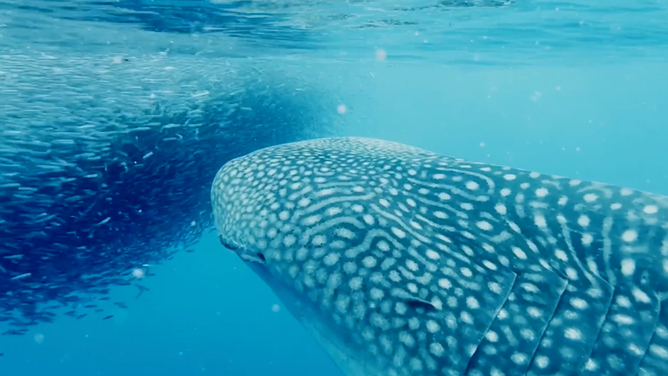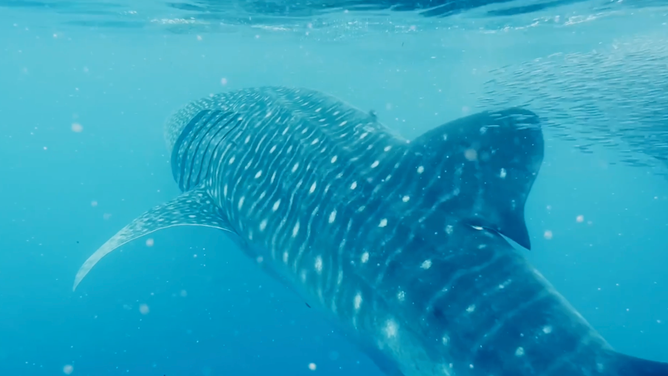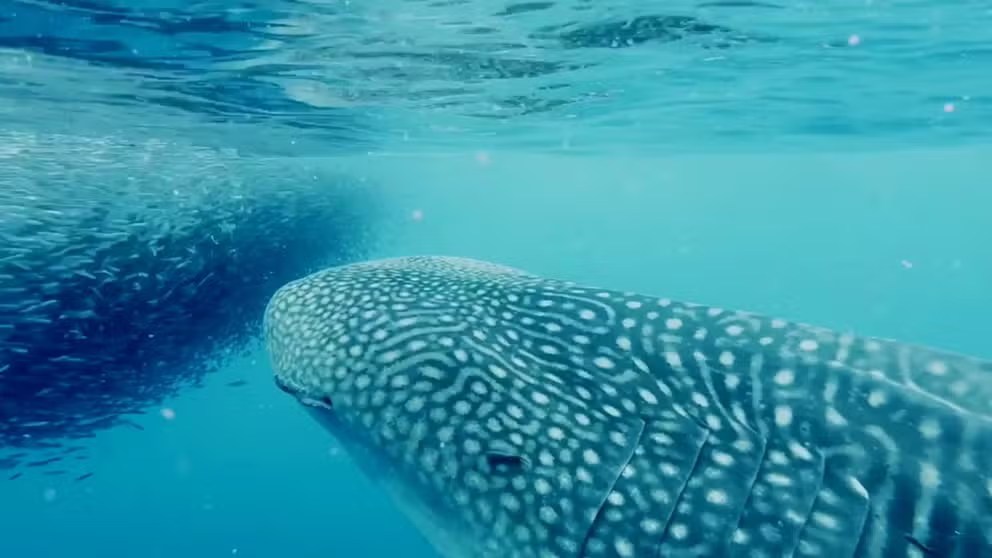Watch: ‘Rarely seen’ 30-foot whale shark spotted near popular bay in Hawaii
Whale sharks are the largest fish species. They usually grow between 13 and 40 feet, according to the Hawaii Department of Land and Natural Resources.
'Rarely seen' 30-foot whale shark spotted near Hawaii
Underwater video shot on Thursday shows a 30-foot whale shark swimming off the northern coast of Oahu near Kāneʻohe Bay. (Courtesy: Mark Royer, University of Hawaii shark researcher)
Underwater video shot on Thursday shows what researchers say is a rarely-seen 30-foot whale shark swimming off the northern coast of Oahu near Kāneʻohe Bay.
Footage shows the shark feeding on schools of nehu, or Hawaiian anchovy, in the pristine blue water.
"While all the small nehu were being drawn to the surface from all the predators, the whale shark was coming in and using its massive mouth to come up to the surface, open it, and then the suction would cause all the fish to funnel into its huge mouth," said Mark Royer, shark researcher with the Hawaii Institute of Marine Biology with the University of Hawaii at Manoa.

Whale shark about to eat some nehu.
(Mark Royer, University of Hawaii shark researcher / FOX Weather)
Royer saw the whale shark while he and fellow HIMB researchers were returning from conducting fieldwork. They spotted what they believed to be a bait ball, or a tightly-packed spherical formation of small fish, as they were pursued by predators below.
WHALE KNOCKS MAN OFF SURFBOARD IN ‘ONE-IN-A-MILLION’ INCIDENT
Royer dove in to investigate further and was surprised to find that one of those predators was a whale shark.

Whale shark approaches the school of nehu.
(Mark Royer, University of Hawaii shark researcher / FOX Weather)
"The whale shark is the world's largest fish, and though it is known to be in Hawaiian waters, it is rarely seen," the University of Hawaii said in a press release about the sighting.
HAWAII FAMILY RESCUES PIG SWIMMING 2 MILES OFFSHORE
Royer added that the video also captures a large aggregation of small and large predators, including mackerel scad, mackerel tuna, skipjack tuna, sandbar sharks and seabirds, who were also feeding on the nehu.

Whale shark swimming away from the camera.
(Mark Royer, University of Hawaii shark researcher / FOX Weather)
The University of Hawaii added that whale sharks are known to approach boats standing idle in the water. They encourage people to be mindful and respectful of the animals by letting them approach and not aggressively approach and disturb them.
Whale sharks can grow up to 40 feet and can weigh up to 40 tons, according to NOAA. The large animals mostly eat small organisms, such as nehu, which they strain from the water as they swim with their wide, meter-long mouths and specialized teeth.
